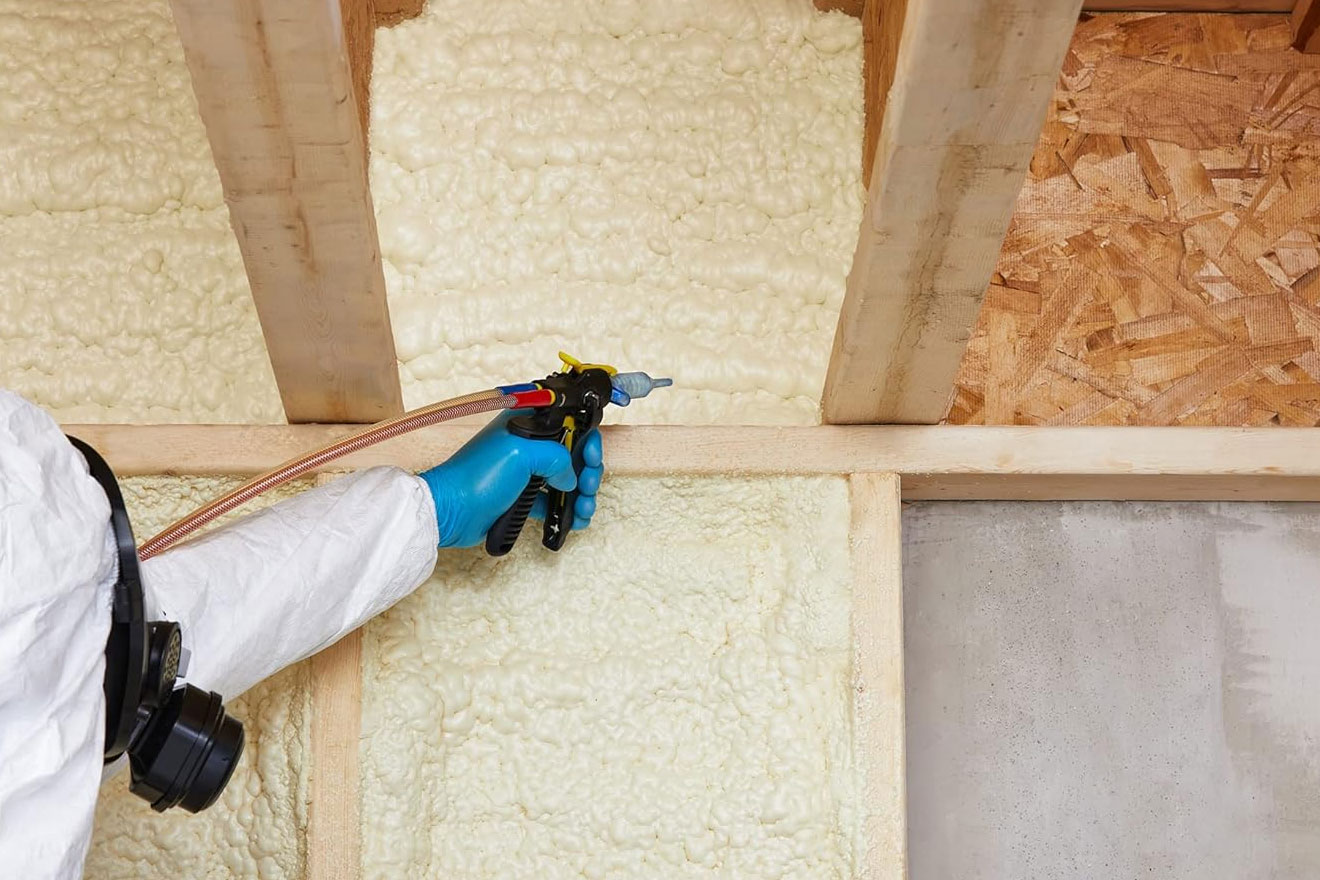Spray foam insulation redefines home efficiency by significantly reducing energy loss, sealing air leaks, and providing superior thermal resistance. It outperforms traditional insulation materials by creating an airtight envelope that enhances both energy performance and indoor comfort. For homeowners seeking to minimize utility bills and improve building longevity, spray foam stands out as a highly effective solution.
This guide explains how spray foam works, its advantages, and what technical factors to evaluate before making a decision. By the end, you'll understand which type of spray foam is best for your application, what performance data to consider, and how to identify your home's specific insulation needs.
Types of Spray Foam Insulation
Open-cell vs Closed-cell Foam
Spray foam comes in two primary forms: open-cell and closed-cell. Each offers distinct benefits depending on location, climate, and performance goals.
Comparison Table: Open-cell vs Closed-cell Spray Foam
Feature
Open-cell Foam
Closed-cell Foam
R-Value (per inch)
~3.5
~6.0
Air Seal Capability
Good
Excellent
Water Resistance
Low
High
Sound Absorption
High
Moderate
Density
~0.5 lb/ft^3
~2 lb/ft^3
Expansion Rate
Expands 100x
Expands 30x
Ideal Use Cases
Interior walls, attics
Foundations, crawl spaces, exteriors
Cost per Board Foot
Lower
Higher

Bonus Tip: For mixed-climate zones, consider hybrid systems combining both open-cell and closed-cell to balance cost and performance.
Technical Performance and Data
Understanding the technical attributes of spray foam helps assess its true efficiency value.
Technical Specifications Table
Specification
Open-cell
Closed-cell
R-Value/inch
~3.5
~6.0
Permeability (perm)
~10
<1
Compressive Strength
~2 psi
25–30 psi
Service Temperature Range
-100°F to 180°F
-40°F to 200°F
Flammability
Must be covered with ignition barrier
Same
Lifespan
20+ years
30+ years

Bonus Tip: Closed-cell foam adds structural strength to buildings due to its high compressive resistance.
Application Process and Installation Considerations
Steps in the Installation Process
- Inspection of existing insulation and air leaks
- Selection of appropriate foam type
- Preparation of worksite (covering sensitive surfaces, ventilation)
- Professional application using spray equipment
- Curing and post-installation ventilation
Note: Installation should only be done by certified professionals due to the chemical handling involved.
Environmental and Health Safety
- All spray foam types must cure completely before occupancy
- Ventilation is critical during and after installation
- Most spray foams are made with environmentally safe blowing agents (e.g., HFOs)
Market Data and Efficiency Trends
According to the U.S. Department of Energy, heating and cooling account for nearly 50% of the average U.S. home’s energy consumption. Homes with professionally applied spray foam insulation can reduce energy use by up to 30-50%.
A 2023 market report by Grand View Research states that the global spray foam insulation market size is expected to reach USD 5.1 billion by 2030, driven by increasing demand for energy-efficient building envelopes.
Things to Consider Before Making a Decision
- Building Age: Older homes may need retrofitting or structural prep.
- Climate Zone: Humid, cold, or hot climates influence material choice.
- Budget Constraints: Closed-cell foam offers better performance but at a higher cost.
- Moisture Levels: Areas prone to moisture require closed-cell.
- Future Renovation Plans: Consider foam permanence and accessibility.
- Ventilation Requirements: Airtightness requires balanced airflow systems.
Bonus Tip: Always request a blower door test post-installation to verify air sealing.
Common Questions
How long does spray foam last?
Most spray foams have a service life of 20 to 30 years, depending on environmental exposure and application quality.
Can I apply spray foam myself?
DIY kits exist, but for full-wall coverage or air sealing, professional installation is strongly advised due to safety, skill, and equipment needs.
Is spray foam suitable for all wall types?
Yes, but the choice between open and closed cell depends on the wall's location, exposure, and design.
What are potential downsides?
High upfront cost, potential off-gassing if improperly applied, and difficulty in removal or retrofitting.
Can it reduce noise?
Open-cell foam offers excellent acoustic dampening, making it suitable for interior partitions and shared walls.
Topic FAQ
Is spray foam insulation better than fiberglass?
Yes, in terms of air sealing, R-value, and longevity, spray foam outperforms fiberglass. However, it also costs more.
Does spray foam affect indoor air quality?
Once cured, spray foam is inert. Proper ventilation during installation is key to maintaining healthy indoor air.
Can spray foam be used in basements?
Closed-cell foam is ideal for basements due to its moisture barrier properties.
Does spray foam meet building codes?
Yes, when installed by certified contractors and covered with appropriate ignition barriers.
Is spray foam environmentally friendly?
Many modern foams use low-GWP (Global Warming Potential) blowing agents and contribute to lower overall energy use.
Make the Right Decision
Spray foam insulation provides unmatched efficiency gains by addressing both thermal resistance and air leakage in one step. By understanding the performance differences between open and closed-cell options and evaluating technical specs alongside building needs, homeowners can make informed, cost-effective decisions.
Carefully assess your climate, budget, and future renovation plans. When applied properly, expert spray foam insulation can redefine home efficiency for decades to come.





Comments